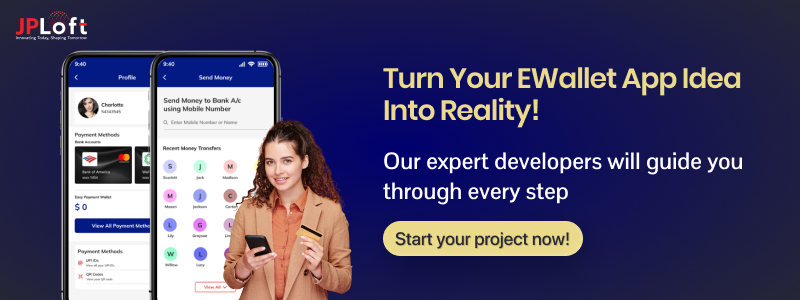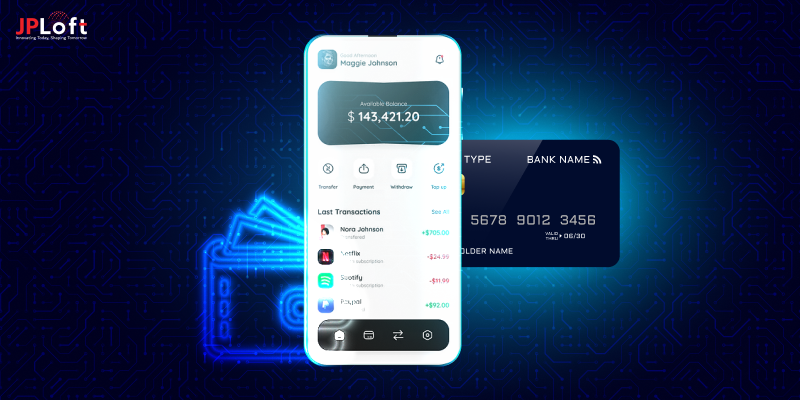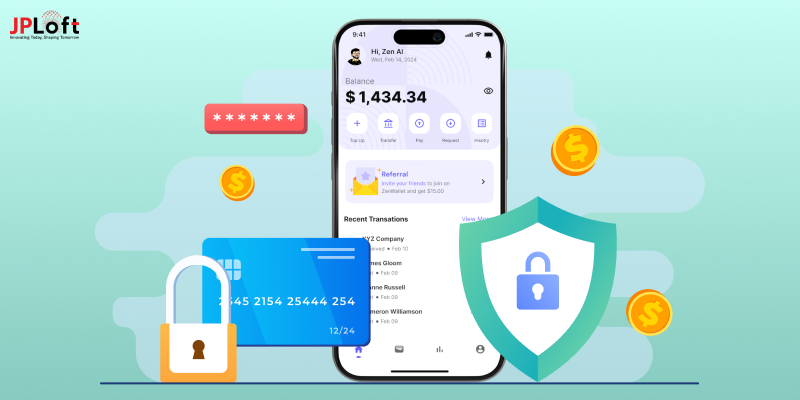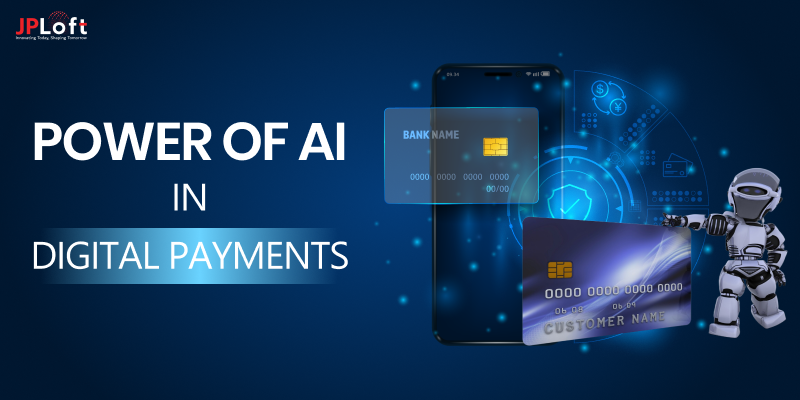So, you’re thinking about multi-currency wallet development? Smart move!
With the world going digital, people need a seamless way to store, manage, and exchange multiple currencies, whether it's crypto, fiat, or even digital assets.
42% of consumers prefer using digital wallets for international payments, and businesses increasingly accept multiple digital assets.
But managing different currencies across multiple platforms? That's a headache no one wants.
That's exactly why companies are racing to create a multi-currency wallet that's secure, scalable, and effortless to use.
Whether you’re an entrepreneur launching a fintech product or an investor exploring this fast-growing market, this guide will walk you through everything you need to know.
What is a Multi-Currency Wallet?
A multi-currency wallet is a digital wallet that allows users to store, send, receive, and exchange multiple fiat and cryptocurrencies within a single platform.
Unlike traditional wallets that support only one currency, multi-currency wallets offer seamless cross-border transactions, real-time currency conversion, and enhanced security features like private key management and multi-signature authentication.
Their popularity has surged with the rise of global digital payments, decentralized finance (DeFi), and the increasing demand for crypto adoption.
Leading examples include Trust Wallet, Exodus, and Coinomi, which provide users access to multiple blockchain networks and integrated exchange services.
As businesses and individuals look for efficient ways to manage digital assets, the demand for multi-currency wallets grows.
For investors and entrepreneurs, this presents a huge opportunity to develop a digital wallet that caters to the expanding fintech and crypto ecosystem, unlocking revenue potential through transaction fees, exchange services, and premium security features.
With this being said, multi-currency wallets come in various types, each designed to cater to different user needs and functionalities.
Let's explore the different types of multi-currency wallets and how they work.
Types of Multi-Currency Wallets and How They Work
Before you create a multi-currency digital wallet, it's essential to understand the different types available.
Not all wallets serve the same purpose- some focus on security, while others emphasize convenience and trading.
Knowing these variations will help you develop a multi-currency wallet that meets user needs and stands out in the competitive fintech space. Let's dive in!
1. Software Multi-Currency Wallets (Hot Wallets)
These internet-connected wallets run on desktops, mobile devices, or browsers, making them highly accessible.
They are widely used for daily transactions and trading but require strong security measures. If you want to build a multi-currency wallet for mobile users, focusing on security enhancements like biometric authentication can make your product more appealing.
-
- Example: Trust Wallet – A mobile-friendly wallet supporting thousands of cryptocurrencies with built-in staking and swapping features.
- Best for: Users who need instant access to digital assets.
- Challenges: Higher risk of cyber threats due to constant internet connectivity.
2. Hardware Multi-Currency Wallets (Cold Wallets)
These wallets store digital assets offline, providing maximum security for long-term investors. Since they are not connected to the internet, they significantly reduce the risk of hacking.
Hardware multi-currency wallets or cold wallet solutions are ideal for institutional investors and high-net-worth individuals.
-
- Example: Ledger Nano X – A highly secure hardware wallet that supports 5,500+ cryptocurrencies.
- Best for: Investors looking for long-term, secure storage solutions.
- Challenges: Less convenient for frequent transactions and comes with an upfront cost.
3. Custodial Multi-Currency Wallets
Here, a third-party service provider manages private keys and security, making it easier for users to recover lost access. These wallets are commonly used by exchanges and businesses.
If you plan to create a multi-currency wallet for businesses, offering a secure custodial solution with compliance features can attract institutional clients.
-
- Example: Coinbase Wallet – A custodial solution offering seamless integration with the Coinbase exchange.
- Best for: Businesses and users who prefer convenience and backup options.
- Challenges: Users don't have complete control over their private keys.
4. Non-Custodial Multi-Currency Wallets
Unlike custodial wallets, these give users complete control over their assets and private keys. They are ideal for crypto enthusiasts and those who value decentralization.
In non-custodial multi-currency wallets, integrating backup recovery solutions can help bridge the gap between security and usability.
-
- Example: Exodus Wallet – A user-friendly wallet that supports multiple blockchains while ensuring full user control.
- Best for: Users who prioritize security and full ownership of their funds.
- Challenges: Losing private keys means losing access to funds permanently.
5. Web3 & DeFi Multi-Currency Wallets
With the rise of decentralized finance (DeFi), Web3 wallets allow seamless interaction with DApps (decentralized applications) while supporting multiple currencies.
If you want to develop a multi-currency wallet for the future of digital finance, integrating Web3 capabilities is a must.
-
- Example: MetaMask – A leading Web3 wallet for Ethereum-based tokens, DApps, and DeFi protocols.
- Best for: Users engaged in DeFi, NFTs, and Web3 applications.
- Challenges: Limited support for non-Ethereum blockchains.
With the growing demand for digital transactions, businesses and investors are exploring new opportunities to start an online wallet business.
But what makes this a lucrative investment? Let’s dive into the key reasons to develop a multi-currency wallet and how it can drive business growth.
Reasons to Invest in a Multi-Currency Wallet in 2025
Digital payments are skyrocketing, and cryptocurrencies are becoming mainstream.
As global transactions grow, businesses and investors are looking for efficient ways to manage multiple currencies in one place.
Thus, the market potential is huge, and if you really want compelling reasons, this section will help.
Here’s why 2025 is the perfect time to build a multi-currency wallet and tap into this booming industry.
1] Explosive Growth in Digital Payments & Crypto Adoption
The global digital payments market is expected to reach $14.78 trillion by 2027.
Meanwhile, cryptocurrency adoption is growing at a staggering 880% year-over-year
A multi-currency wallet allows users to manage both crypto and fiat, making it an essential tool for the future of finance.
Investing in multi-currency wallet development now means tapping into a high-growth market with massive user demand.
2] Cross-Border Transactions Are at an All-Time High
Traditional banking systems come with high fees and delays for international transfers.
In contrast, blockchain-powered multi-currency wallets offer instant, low-cost transactions across borders.
According to the World Bank, global remittances reached 913 billion U.S. dollars by 2025, highlighting the urgent need for better cross-border payment solutions.
If you launch a multi-currency wallet, you can capitalize on this demand and offer businesses and users a seamless global payment experience.
3] Rising Demand for Secure & Decentralized Financial Solutions
With increasing cyber threats and banking restrictions, users are shifting towards decentralized and secure digital wallets.
Reports indicate that over $3.8 billion was lost in crypto hacks a few years back, pushing demand for strong encryption and self-custody features for wallets.
If you build a multi-currency digital wallet with advanced security features like biometric authentication and multi-signature wallets, you can attract users looking for safer alternatives.
4] Huge Revenue Opportunities Through Wallet Monetization
A multi-currency wallet project isn’t just about transactions; it’s a massive business opportunity.
Wallets generate revenue through exchange fees, staking rewards, premium subscriptions, and transaction processing.
The global crypto wallet market is projected to grow at 24.8% CAGR from 2024 to 2030.
Investing in such projects means you’re stepping into a high-revenue industry with multiple income streams.
With these reasons, we believe you might be interested enough to look at how to create a multi-currency wallet.
How to Build a Multi-Currency Wallet?
To develop a multi-currency wallet, you need a mix of smart planning, the right tech, and strong security.
It’s not just about coding; it’s about ensuring seamless transactions and user-friendly design.
Each step is crucial in building a secure and high-performing wallet, from defining key features to choosing the perfect app tech stack.
Here’s how you can make a multi-currency wallet step by step:
Step 1: Define Your Wallet’s Purpose & Features
Before diving into development, outline the core purpose of your wallet.
Will it support cryptocurrencies, fiat, or both? What level of security will it offer? Knowing the answers will shape your wallet’s foundation.
Essential features include multi-asset support, instant conversions, and private key encryption for secure transactions.
-
- Identify your target audience and market needs.
- Decide on must-have features like multi-asset storage and biometric authentication.
- Ensure compliance with global financial regulations.
Step 2. Design an Intuitive User Experience
User experience is everything! A cluttered or confusing design can drive users away.
This is where App Design plays a vital role. Start with an App Wireframe to structure the flow, followed by an App Prototype to test usability.
A sleek, easy-to-navigate UI ensures seamless transactions and user retention. So focus on it especially when you embark on a multi-currency wallet development journey.
-
- Use a wireframe to map out key functionalities.
- Develop an interactive app prototype for real-world testing.
- Optimize the UI/UX for smooth, hassle-free user interactions.
Step 3. Choose the Right App Tech Stack
The backbone of multi-currency digital wallet development is a solid app tech stack that ensures performance, security, and scalability.
Selecting the right technologies will enhance transaction speed and wallet security while allowing future upgrades.
-
- Choose a blockchain network like Ethereum, Solana, or Binance Smart Chain.
- Use robust programming languages such as Python, JavaScript, or Solidity.
- Implement secure authentication methods like multi-signature and two-factor authentication.
Step 4. Develop the Backend & Integrate APIs
The backend is the heart of seamless transactions and security! A strong backend ensures smooth transactions, real-time exchange rates, and high security.
API integrations connect your wallet to external payment gateways, blockchain networks, and currency exchange platforms.
-
- Set up a scalable backend to handle multiple transactions.
- Integrate APIs for real-time price updates and exchange conversions.
- Implement KYC/AML compliance to meet regulatory standards.
Step 5. Secure the Wallet with Advanced Protection
Security is a top priority in the multi-currency wallet. Users trust wallets that offer foolproof encryption and fraud detection.
Implementing multi-layer security features ensures that funds remain safe from cyber threats.
-
- Encrypt private keys using AES-256 encryption.
- Add biometric authentication and two-factor security.
- Perform regular security audits to prevent vulnerabilities.
Step 6. Test, Deploy & Maintain the Wallet
Once you build your multi-currency wallet, rigorous testing ensures a seamless, bug-free experience.
Post-launch, app maintenance services are crucial to update the wallet, fix bugs, and roll out new features based on user feedback.
-
- Conduct penetration testing to identify security loopholes.
- Deploy the wallet on multiple platforms (iOS, Android, Web).
- Offer continuous maintenance services for performance improvements and updates.
As much as it was essential to know the multi-currency wallet development process, it is time to know about the features of a multi-currency wallet.
Essential Features to Have in a Multi-Currency Wallet
A well-designed multi-currency wallet isn’t just about holding different assets—it needs to be secure, user-friendly, and efficient.
Whether you're looking to make a multi-currency wallet for crypto, fiat, or both, incorporating the right features ensures a seamless user experience while making your wallet stand out in the competitive market.
Here’s a breakdown of the must-have wallet features:
|
Feature |
Description |
|
Multi-Asset Support |
Allows users to store, send, and receive various cryptocurrencies and fiat currencies in one place. |
|
Real-Time Exchange Rates |
Integrates live market prices to facilitate instant currency conversions. |
|
Cross-Platform Compatibility |
Ensures the wallet works seamlessly across mobile, web, and desktop platforms. |
|
Security Features |
Includes multi-factor authentication, biometric login, and private key encryption for enhanced protection. |
|
QR Code Payments |
Simplifies transactions by enabling QR code scanning for quick and secure payments. |
|
Backup & Recovery Options |
Provides seed phrases and encrypted backups to restore wallets in case of data loss. |
|
Integration with DeFi & Exchanges |
Allows direct access to decentralized finance services and crypto exchanges. |
|
Transaction History & Reports |
Enables users to track their transactions, generate reports, and monitor spending habits. |
|
Multi-Signature Authentication |
Enhances security by requiring multiple approvals for high-value transactions. |
|
Push Notifications & Alerts |
Keeps users updated with transaction confirmations, security alerts, and price changes. |
By incorporating these features, you can create a multi-currency wallet that meets user and investor expectations while staying ahead in the digital finance industry!
Now, here comes the most important question that is:
How Much Does it Cost to Create a Multi-Currency Wallet?
People interested in making such a wallet often have this question: "What is the cost to build a Multi-currency wallet?”
On average, the multi-currency wallet development cost can go from $30,000 to $150,000+. Cost is never a fixed number; it can increase or decrease depending on different elements.
Similar to any other digital wallet development cost, it varies based on the complexity of the wallet, platform compatibility, and custom integrations.
Many factors, including advanced security, compliance requirements, and unique features, can drive up the cost.
To understand even better, here is a table for your help:
|
Development Stage |
Estimated Cost |
|
Basic Wallet with Core Features |
$30,000 – $50,000 |
|
Moderate Wallet with Extra Security & APIs |
$50,000 – $100,000 |
|
Advanced Wallet with High-End Security & Custom Features |
$100,000 – $150,000+ |
The total cost depends on your wallet’s complexity, features, and customization needs, so it's always best to plan accordingly!
Besides, consulting with the best mobile app development company will be even better.
Key Factors Affecting the Cost to Build a Multi-Currency Wallet
Let’s be real, building a multi-currency wallet isn’t just about writing some code and calling it a day. It’s about security, compliance, seamless transactions, and an intuitive user experience.
And guess what? All of these factors impact the cost to develop a multi-currency wallet.
Some wallets are simple and budget-friendly, while others are loaded with high-end features, making them expensive. Let’s break down the key cost drivers!
A] Features & Functionalities
The more advanced your wallet, the higher the cost.
Basic wallets allow simple transactions, while premium ones include multi-signature authentication, real-time currency conversion, and DeFi integration. Expect the price to climb if you want features like biometric authentication, push notifications, and cross-chain support.
Cost Impact: Basic features keep costs low, while advanced functionalities can push the budget significantly higher.
B] Security & Compliance
Handling multiple currencies means app security is non-negotiable.
You’ll need end-to-end encryption, two-factor authentication, and KYC/AML compliance to prevent fraud and hacks.
Higher security standards mean additional development time and cost, but they’re crucial for building investor trust.
Cost Impact: The stricter the security, the more expensive the wallet development.
C] Platform & Device Compatibility
Are you launching the wallet on iOS, Android, or both? Or even a web app?
A single-platform wallet costs less, but if you want cross-platform compatibility with a smooth UI/UX, it adds to the cost to create a multi-currency wallet.
Don’t forget about scalability- future-proofing your app is always a smart move.
Cost Impact: More platforms = higher development costs but greater user reach.
D] Blockchain & Technology Stack
The underlying app tech stack plays a big role in defining costs.
Do you want a custodial or non-custodial wallet? Will it support Ethereum, Binance Smart Chain, or multiple blockchains?
Choosing the right blockchain infrastructure and APIs affects development complexity and expenses.
Cost Impact: More integrations and advanced blockchain tech lead to higher costs.
E] UI/UX Design & Prototyping
A sleek, intuitive design isn’t just for aesthetics-- it ensures a great user experience.
From App Design to the App Prototype, creating a visually appealing and easy-to-navigate interface takes time and skilled designers.
A poorly designed wallet can drive users away, while a well-structured one boosts engagement.
Cost Impact: High-quality UI/UX design increases initial costs but enhances long-term user retention.
F] Development Team & Expertise
Who’s building your wallet? Hiring freelancers is cheaper, but they might lack the expertise needed for complex development.
On the other hand, an experienced agency ensures quality but comes at a premium price.
The cost to develop a multi-currency wallet also depends on the location of your development team- North American developers charge more than those in Asia or Eastern Europe.
Cost Impact: Skilled developers cost more, but they ensure a robust and scalable product.
G] Maintenance & Upgrades
Even after launch, your wallet will need continuous improvements, security patches, and feature updates.
App maintenance is crucial to keep your wallet secure and competitive in a rapidly evolving crypto landscape. The more frequent the updates, the higher the long-term expenses.
Cost Impact: Ongoing maintenance is an added cost but essential for long-term success.
As this is out of the way, we will learn how to make money from a multi-currency wallet.
How to Make Money From a Multi-Currency Wallet?
What if we told you that your multi-currency wallet could be more than just a payment tool- it could also be a serious revenue-generating machine.
Beyond offering seamless crypto and fiat transactions, you can monetize your wallet in multiple ways and turn it into a profitable business.
From transaction fees to premium memberships, here's how you can make money from your wallet.
► Transaction Fees – The Classic Revenue Model
You can charge a small transaction fee whenever a user sends, receives, or converts currency within your wallet.
Even a 0.5%–2% fee per transaction can add significant revenue, especially with a high volume of daily transactions. Many wallets, like Trust Wallet, follow this model to maintain profitability.
Why it works?
It’s a sustainable and predictable income stream if users actively use your wallet.
► Premium Features & Subscriptions
Not everyone wants just a basic wallet—some users will pay extra for advanced features. You can offer premium plans that include:
-
- Faster transactions
- Higher withdrawal limits
- Advanced security features (like multi-signature authentication)
- Exclusive investment insights
Why it works?
Recurring subscription revenue ensures long-term profitability. Many fintech companies leverage this model successfully.
► In-App Currency Swaps & Conversions
Users often need to swap currencies within their wallets.
By integrating a built-in exchange, you can charge a small percentage for currency swaps.
For example, if someone converts Bitcoin to USDT or EUR to USD, you take a tiny cut for facilitating the transaction.
Why it works?
It adds convenience for users while providing a steady profit stream from every swap.
► Partnerships & Affiliate Marketing
Want an effortless way to earn? Partner with crypto exchanges, trading platforms, or even e-commerce sites that accept cryptocurrency.
When users make purchases or trade through your app, you earn a commission from partnered companies.
Why it works?
It’s a zero-effort revenue stream that generates passive income while users interact with partner services.
► Advertisements & Sponsored Listings
If you build a multi-currency wallet with a large user base, businesses will pay you to promote their services inside your app. This could be through:
-
- Banner ads for crypto exchanges
- Sponsored listings for DeFi projects
- Promoted token integrations
Why it works?
The more users your wallet has, the higher you can charge for ad placements!
While understanding different ways to monetize the wallet app is crucial, it's just as important to be aware of the challenges that come with it.
How to Tackle Challenges in Multi-Currency Wallet Development?
Building a multi-currency wallet isn’t just about seamless transactions and sleek UI- it’s also about navigating roadblocks that come along the way.
From security threats to compliance issues, there are plenty of challenges in digital wallet development that can slow you down.
But don’t worry! Every problem has a solution, and here’s how you can overcome the biggest hurdles.
1. Security Threats – Keeping Hackers Away
With cyberattacks on the rise, digital wallet security is non-negotiable.
A single vulnerability could lead to massive financial losses, making security the #1 concern in making a multi-currency wallet.
Solution:
-
- Use multi-layer encryption to protect sensitive data.
- Implement biometric authentication & 2FA for extra security.
- Regularly conduct penetration testing to identify and fix vulnerabilities.
2. Regulatory Compliance – Staying Legally Sound
Crypto regulations vary across countries, making it tricky to launch a wallet that meets all legal requirements. Failing to comply can result in hefty fines or even being banned.
Solution:
-
- Work with legal experts to understand regional laws.
- Obtain necessary licenses before launching.
- Implement KYC (Know Your Customer) & AML (Anti-Money Laundering) procedures.
3. Managing Currency Volatility – Handling Price Fluctuations
Cryptocurrencies are known for their wild price swings. One moment Bitcoin is at $50K, the next it’s at 45 K. How do you ensure users don’t suffer due to sudden drops?
Solution:
-
- Integrate real-time exchange rate APIs to keep prices updated.
- Offer stablecoin support (like USDT or USDC) to hedge against volatility.
- Provide users with custom alerts for major price changes.
4. Seamless User Experience – Making It Easy for Everyone
A complex interface can drive users away. If they struggle to navigate the app, they’ll abandon it in no time. Your goal? A simple, intuitive experience!
Solution:
-
- Prioritize clean UI & easy navigation.
- Use a Wireframe to test the design before development.
- Ensure fast transactions & smooth integrations with different currencies.
5. Liquidity Management – Ensuring Smooth Transactions
A multi-currency wallet needs to support quick conversions between different assets. However, users may face delays or high fees without proper liquidity management.
Solution:
-
- Partner with trusted liquidity providers for seamless transactions.
- Implement automated market-making (AMM) to reduce delays.
- Offer multiple payment options, including fiat and crypto.
6. Scalability – Preparing for Future Growth
Your wallet might work fine with a few thousand users, but what happens when it scales to millions? Without proper infrastructure, slow transactions & downtime can become a nightmare.
Solution:
-
- Use a robust App Tech Stack to ensure scalability.
- Implement cloud-based solutions for better performance.
- Regularly optimize the app's backend for faster transaction processing.
With challenges and solutions covered, let's explore future trends shaping the industry.
Future Trends Shaping Multi-Currency Wallet Development
The world of multi-currency wallets is evolving faster than ever! What started as a simple tool to store digital assets is now transforming into an innovative, AI-powered financial ecosystem.
With blockchain advancements and shifting user demands, the future looks incredibly promising.
If you plan to create a multi-currency wallet, keeping up with these trends can give you a competitive edge and make your digital wallet future-proof.
Let's explore the most prominent digital wallet trends :
1] AI-Powered Smart Wallets
AI is making its way into multi-currency wallets, helping users optimize transactions, predict market trends, and automate portfolio management.
AI-driven wallets can even provide personalized investment advice, making crypto more accessible to beginners.
Why It Matters?
-
- AI in digital wallets helps detect fraud and suspicious transactions.
- Users can automate trading & currency conversions.
- Smart suggestions improve user experience & engagement.
2] Cross-Chain Compatibility & Interoperability
Gone are the days when users had to stick to a single blockchain network.
The future of the multi-currency wallet is all about cross-chain functionality, allowing seamless transactions between Ethereum, Solana, Binance Smart Chain, and more.
Why It Matters?
-
- Users can store, swap, and transfer assets across multiple blockchains.
- No need for third-party exchanges—wallets will act as universal gateways.
- Enhances speed, security, and cost-efficiency.
3] DeFi Integration – The Rise of Decentralized Wallets
Decentralized Finance (DeFi) is taking over traditional banking, and wallets follow suit.
DeFi-powered multi-currency wallets enable users to earn interest, stake assets, and access financial services without intermediaries.
Why It Matters?
-
- Users can access decentralized lending, borrowing, and staking.
- Wallets will become mini-financial hubs, not just storage tools.
- No dependence on banks or centralized institutions.
4] Biometric & Hardware Security Enhancements
Security remains a top priority in multi-currency wallet development.
With rising cyber threats, next-gen wallets will integrate biometric authentication (fingerprint, facial recognition) and hardware-based security features to prevent hacking.
Why It Matters?
-
- Stronger protection against fraud & phishing attacks.
- Multi-layer authentication reduces unauthorized access.
- Hardware wallets will work seamlessly with digital ones.
5] CBDC & Fiat-Crypto Hybrid Wallets
As governments explore Central Bank Digital Currencies (CBDCs), multi-currency wallets will support both fiat and crypto seamlessly.
Users will be able to hold digital dollars, euros, and crypto assets all in one place.
Why It Matters?
-
- Enhances adoption of blockchain-based payments.
- Businesses and users can transact with both fiat & crypto easily.
- Future wallets will work with banks & blockchain together.
6] NFT & Metaverse Wallets
The demand for NFTs (Non-Fungible Tokens) and Metaverse assets is skyrocketing!
Modern wallets will integrate NFT management, virtual asset storage, and metaverse payments, making them essential tools for digital asset collectors and gamers.
Why It Matters?
-
- Users can buy, sell, and showcase NFTs in the wallet.
- Wallets will support in-game transactions & virtual land ownership.
- Brands will use wallets for digital identity verification in the Metaverse.
Why Choose JPLoft for Your Multi-Currency Wallet Project?
Imagine turning your app idea into a powerful digital solution that transforms industries!
Whether eWallet or multi-currency wallet, JPLoft, the best eWallet app development company, can craft secure, scalable, and high-performance solutions that help businesses thrive.
Our expert team of developers, designers, and strategists specializes in everything from the development of multi-currency wallets to AI-powered platforms, ensuring seamless user experiences and future-ready innovations.
With a commitment to quality, creativity, and cutting-edge technology, we help brands stay ahead in an ever-evolving digital world.
Ready to build something extraordinary? Let's make it happen!
Conclusion
A simple answer to how to build a multi-currency wallet is by following a structured multi-currency wallet development process, defining features, choosing the right tech stack, and prioritising security- you can create a competitive wallet that meets market demands.
A well-developed wallet supports multiple currencies, ensures top-tier security, and offers features like real-time conversions and DeFi integration.
Whether you're targeting finance enthusiasts or global businesses, a multi-currency wallet presents a lucrative opportunity. Ready to launch your wallet? Partner with experts to turn your vision into a secure, scalable, and user-friendly solution.
FAQs
The best multi-currency wallets include Trust Wallet, Exodus, and MetaMask, offering support for multiple cryptocurrencies, strong security, and user-friendly interfaces.
To create a digital currency wallet, follow these steps:
- Define your wallet’s purpose and features.
- Design an intuitive UI/UX.
- Choose a secure tech stack (blockchain, APIs).
- Develop and test the wallet.
- Deploy and maintain it with regular updates.
For expert guidance, consult a professional development team.
A secure wallet must include biometric authentication, multi-signature support, encryption, and regular security audits to protect against hacks and fraud.
Costs range from $30,000 to 150,000+, depending on features, security, platform compatibility, and development team expertise.
Yes! Advanced wallets integrate crypto, fiat, and even CBDCs, allowing seamless transactions across different currency types.














Share this blog